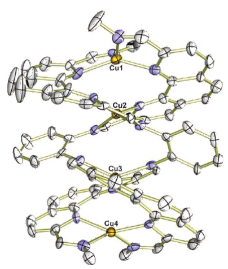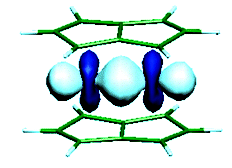-
Multiconfigurational Second-Order Perturbation Theory Restricted Active Space (RASPT2) Method for Electronic Excited States: A Benchmark Study
V. Sauri, L. Serrano-Andrés, A. Rehaman Moughal Shahi, L. Gagliardi, S. Vancoillie and K. Pierloot
Journal of Chemical Theory and Computation, 7 (1) (2011), p153-168


DOI:10.1021/ct100478d | unige:14808 | Abstract | Article HTML | Article PDF
The recently developed second-order perturbation theory restricted active space (RASPT2) method has been benchmarked versus the well-established complete active space (CASPT2) approach. Vertical excitation energies for valence and Rydberg excited states of different groups of organic (polyenes, acenes, heterocycles, azabenzenes, nucleobases, and free base porphin) and inorganic (nickel atom and copper tetrachloride dianion) molecules have been computed at the RASPT2 and multistate (MS) RASPT2 levels using different reference spaces and compared with CASPT2, CCSD, and experimental data in order to set the accuracy of the approach, which extends the applicability of multiconfigurational perturbation theory to much larger and complex systems than previously. Relevant aspects in multiconfigurational excited state quantum chemistry such as the valence−Rydberg mixing problem in organic molecules or the double d-shell effect for first-row transition metals have also been addressed.


